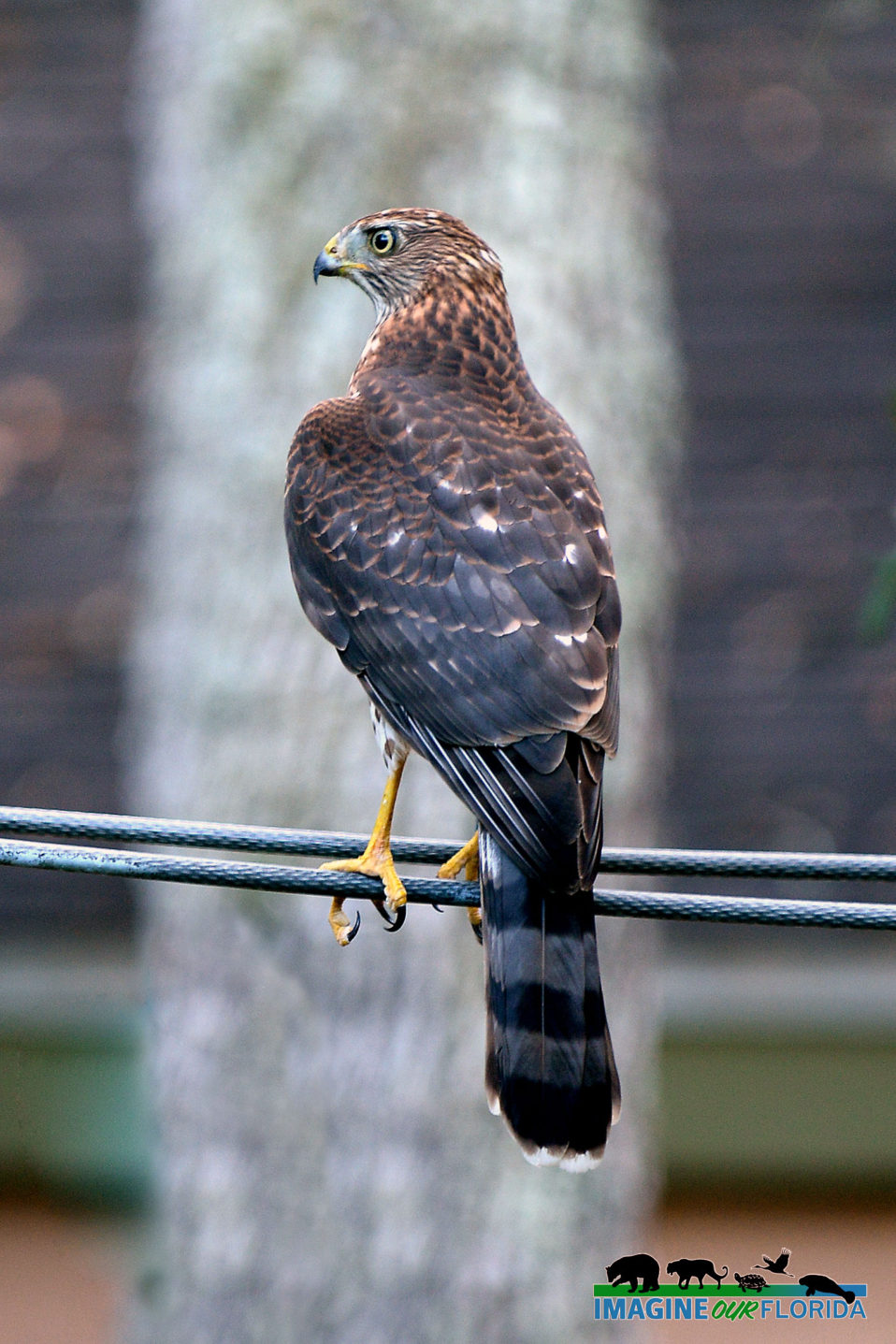The Cooper’s hawk (Accipiter cooperii) is widely known and dispersed throughout the U.S., lower Canada, and Mexico. Look for this raptor with its steel-gray back and reddish barred chest in wooded areas and in neighborhoods. This stealth hunter can be seen flying through thick canopies of trees or gliding low to the ground to grab its prey in a split second. Medium-sized birds such as robins and jays make up most of their diet, They will also dine on rats, mice, squirrels, bats, and an occasional lizard or snake.
Male Cooper’s hawks build the nest in a tall tree. Brood size is 2 – 6 eggs. Males provide food for the female and chicks for more than 3 months until the young fledge. Cooper’s Hawk eggs and hatchlings are susceptible to being food for other animals like raccoons and raptors. When there is a threat near their nest, you will hear them ka-ka-ka-ka.
The Cooper’s Hawk was declining in population throughout the U.S. due to hunting and pesticide use. Since DDT has been banned and hunting has been curbed, populations have become stable.
Cooper’s Hawks will often take up residence in a neighborhood where birdfeeders are present. If a Cooper’s Hawk is finding easy prey with the birds at your feeder, remove the feeder until the hawk has moved on.
Photo Credit: Dan Kon



Recent Comments